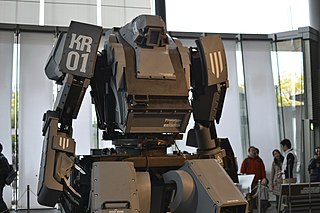
In science fiction, mecha or mechs are giant robots or machines typically depicted as piloted and as humanoid walking vehicles. The term was first used in Japanese after shortening the English loanword 'mechanism' or 'mechanical', but the meaning in Japanese is more inclusive, and 'robot' or 'giant robot' is the narrower term.

Sonic Heroes is a 2003 platform game developed by Sonic Team USA and published by Sega as part of the Sonic the Hedgehog series. The player races a team of series characters through levels to amass rings, defeat robots, and collect the seven Chaos Emeralds needed to defeat Doctor Eggman. Within each level, the player switches between the team's three characters, who each have unique abilities, to overcome obstacles. Sonic Heroes downplays the action-adventure and exploration-based gameplay of its predecessors Sonic Adventure (1998) and Sonic Adventure 2 (2001) in favor of returning to the linear style of Sega Genesis-era Sonic games.

The Legend of Zelda: Four Swords Adventures is an action-adventure game developed and published by Nintendo for the GameCube. It is the eleventh installment in The Legend of Zelda series. It was released in 2004 in Japan on March 18, and in North America on June 7. In 2005, the game was released in Europe on January 7, and in Australia on April 7. The Game Boy Advance handheld game console can be used as a controller when using the GameCube – Game Boy Advance link cable bundled with the game in North America and Europe.

Custom Robo is an action role-playing video game series developed by Noise and published by Nintendo.
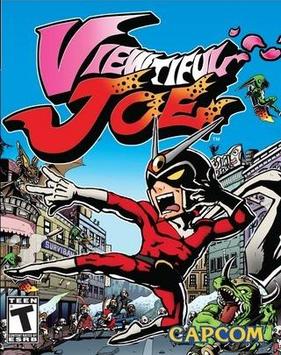
Viewtiful Joe is a side-scrolling beat 'em up video game developed by Team Viewtiful for the GameCube. It was originally released in 2003 as a part of the Capcom Five, under director Hideki Kamiya and producer Atsushi Inaba. The game was later ported to the PlayStation 2 by the same design team under the name Clover Studio, subtitled in Japan Aratanaru Kibō. The game's story concerns Joe, an avid movie-goer whose girlfriend Silvia is kidnapped during a film starring Joe's favorite superhero, Captain Blue. Joe is shortly thereafter thrust into Movieland, where Silvia is taken by the villainous group known as Jadow. After accepting a special V-Watch from Captain Blue, Joe transforms into the tokusatsu-style persona "Viewtiful Joe" and sets out to rescue her.

Killer7 is a 2005 action-adventure video game developed by Grasshopper Manufacture and Capcom and published by Capcom for the GameCube and PlayStation 2. The game was written and directed by Goichi Suda and produced by Hiroyuki Kobayashi.

Dragon Ball Z: Budokai, released as Dragon Ball Z in Japan, is a fighting video game developed by Dimps for PlayStation 2 release in 2002 and GameCube release in 2003. The first game in the Dragon Ball Z: Budokai series, it is based on the Japanese anime series Dragon Ball Z, part of the manga franchise Dragon Ball. It was published in Japan by Bandai and in North America by Infogrames, and was the first console Dragon Ball video game in five years since Dragon Ball GT: Final Bout (1997).

Dragon Ball Z: Budokai 2, released as Dragon Ball Z2 in Japan, is a fighting video game developed by Dimps based upon the anime and manga series, Dragon Ball Z, and a sequel to Dragon Ball Z: Budokai. It released for the PlayStation 2 in 2003 and for the GameCube in 2004 and was published in Japan and Europe by Bandai and in North America, Australia and South Africa by Atari SA.

Shadow the Hedgehog is a 2005 platform game developed by Sega Studios USA and published by Sega. It is a spin-off from the Sonic the Hedgehog series starring the character Shadow. It follows the amnesiac Shadow's attempts to learn about his past during an alien invasion. Gameplay is similar to previous Sonic games, featuring fast-paced platforming and ring collecting, but introduces third-person shooter and nonlinear elements. Shadow uses a variety of weapons to defeat enemies and complete missions that determine the plot and playable levels.

Streets of Rage 3 is a side-scrolling beat 'em up developed and published by Sega in 1994 for the Genesis. It is the third installment of the Streets of Rage series and the last game in the original trilogy. The game includes several changes over Streets of Rage and Streets of Rage 2, such as a more complex plot, inclusion of character dialogue, longer levels, more in-depth scenarios and faster gameplay. Weapons can be integrated with unique moves with certain characters, hidden characters were added, and a few cutscenes were included to give the story greater depth.

Dragon Ball GT: Final Bout, known in Japan and Europe as Dragon Ball: Final Bout, is a fighting game for the PlayStation. The game was developed by TOSE and released by Bandai in Japan, Europe and North America in 1997, making it the first North American release for a Dragon Ball video game.

Chibi-Robo! Plug Into Adventure! is a 2005 platform-adventure video game developed by Skip Ltd. and published by Nintendo for the GameCube console. It was released in Japan in 2005, and in North America and Europe the following year. Originally conceived as a point-and-click adventure game, it was put on developmental hold until Nintendo producer Shigeru Miyamoto gained interest in the title and overhauled its production.

Def Jam: Fight for NY is a 3D fighting video game developed by AKI Corporation and EA Canada and published by EA Games. It was released for the GameCube, PlayStation 2, and Xbox on September 21, 2004. The game is the second main installment in EA's Def Jam-licensed hip-hop video game series, and the direct sequel to Def Jam Vendetta. It was ported to the PlayStation Portable under the title Def Jam Fight for NY: The Takeover in 2006, and was followed up by Def Jam: Icon in 2007.
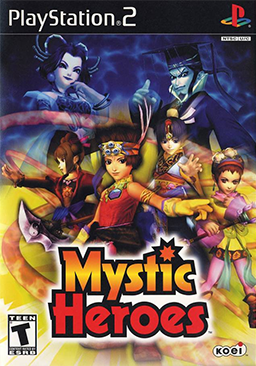
Mystic Heroes is a hack and slash video game developed by Koei. The game is loosely based on Investiture of the Gods, a Chinese supernatural novel about the fall of the Shang Dynasty and the rise of the Zhou Dynasty.

Street Racing Syndicate is an open world multiplatform racing video game produced by Eutechnyx, and released by Namco on August 31, 2004, for the PlayStation 2, GameCube, Xbox and Windows-based personal computers. The game was also released for the Game Boy Advance on October 4, 2005. During its release, it was meant to compete against Need for Speed: Underground 2, the sequel to the critically acclaimed first game released in 2003.
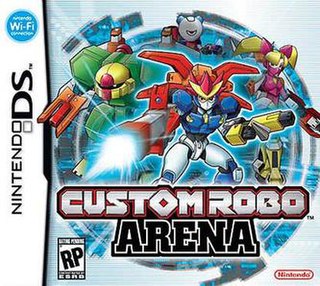
Custom Robo Arena, known in Japan as Gekitō Custom Robo, is an action role-playing game released for the Nintendo DS. It is the fifth game in Custom Robo series. The game was released October 2006 in Japan.

Custom Robo is an action role-playing video game developed by Noise and published by Nintendo for the Nintendo 64 in 1999 in Japan, and in 2006 for the iQue Player in China. It is the first game in the Custom Robo series. The game and its sequel Custom Robo V2 were re-released on the Nintendo Switch Online + Expansion Pack in Japan in July 2022.
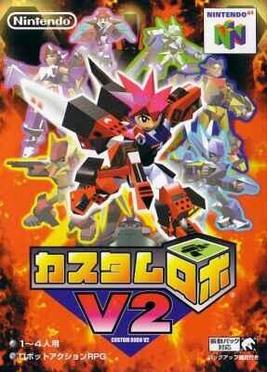
Custom Robo V2 is an action role playing video game developed by Noise and published by Nintendo. It was released for the Nintendo 64 in Japan on November 10, 2000. It was later re-released on February 19, 2008, for the Wii Virtual Console in Japan, and June 8, 2016, for the Wii U Virtual Console. It is the second title of the Custom Robo series, as well as the last of the series for the Nintendo 64. It is also the first title of the series to allow up to four players to play, instead of two players. The game was re-released along with its predecessor on the Nintendo Switch Online + Expansion Pack in Japan in July 2022.
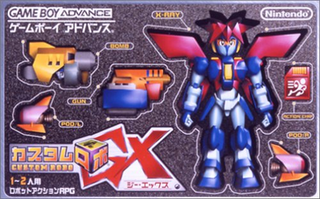
Custom Robo GX is an action role-playing game developed by Noise, and published by Nintendo for the Game Boy Advance on July 26, 2002, in Japan. The game stayed on Nintendo Power's future release list for a few years, until the release of the next title of the series, Custom Robo: Battle Revolution for the GameCube. NOISE also planned the sequel Custom Robo GX 2, but later dropped it in favor of Custom Robo Arena for the Nintendo DS. Nintendo previously planned to release it in late 2005 in Japan. Custom Robo GX is the third title of the Custom Robo series as well as the last Custom Robo title never released outside Japan.

NOISE Inc. is a Japanese video game development company that works in partnership with Nintendo, developing games for the Custom Robo series.




















